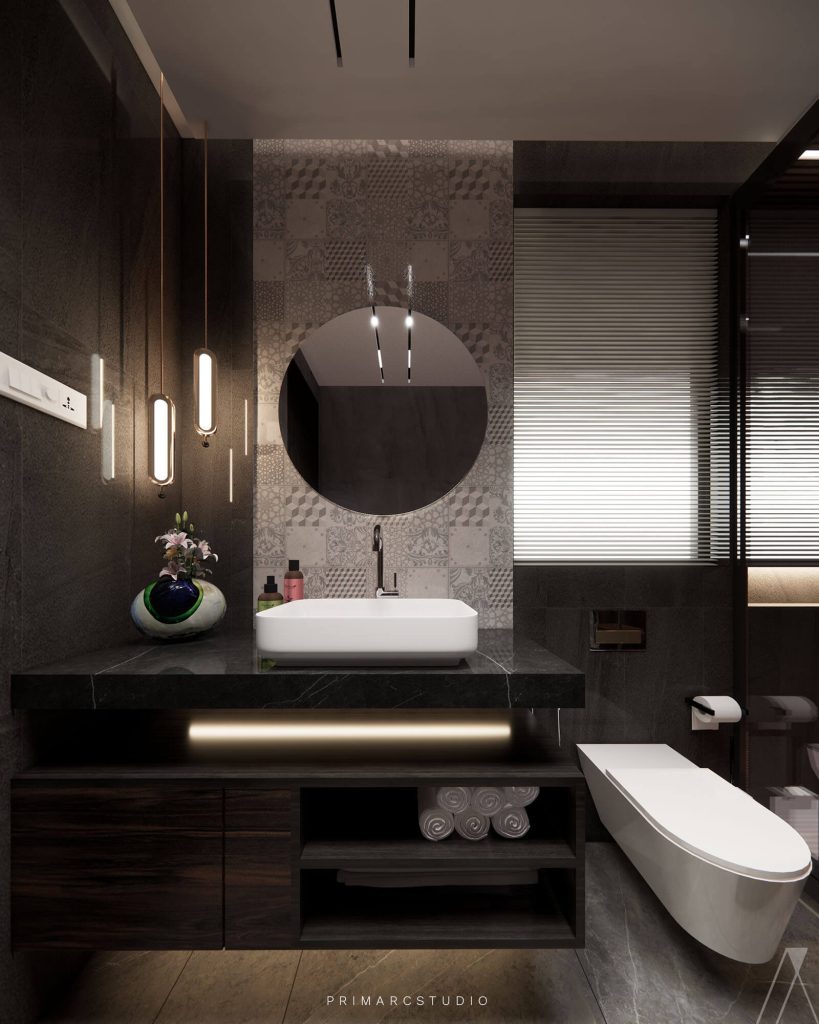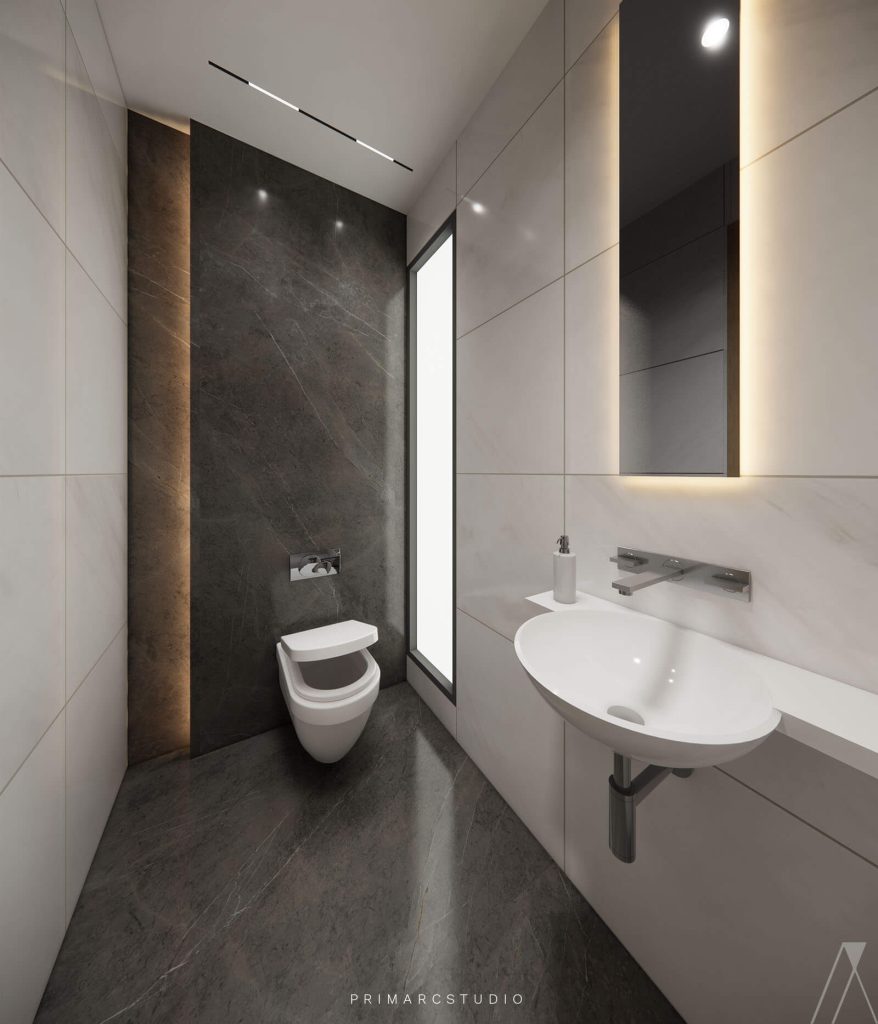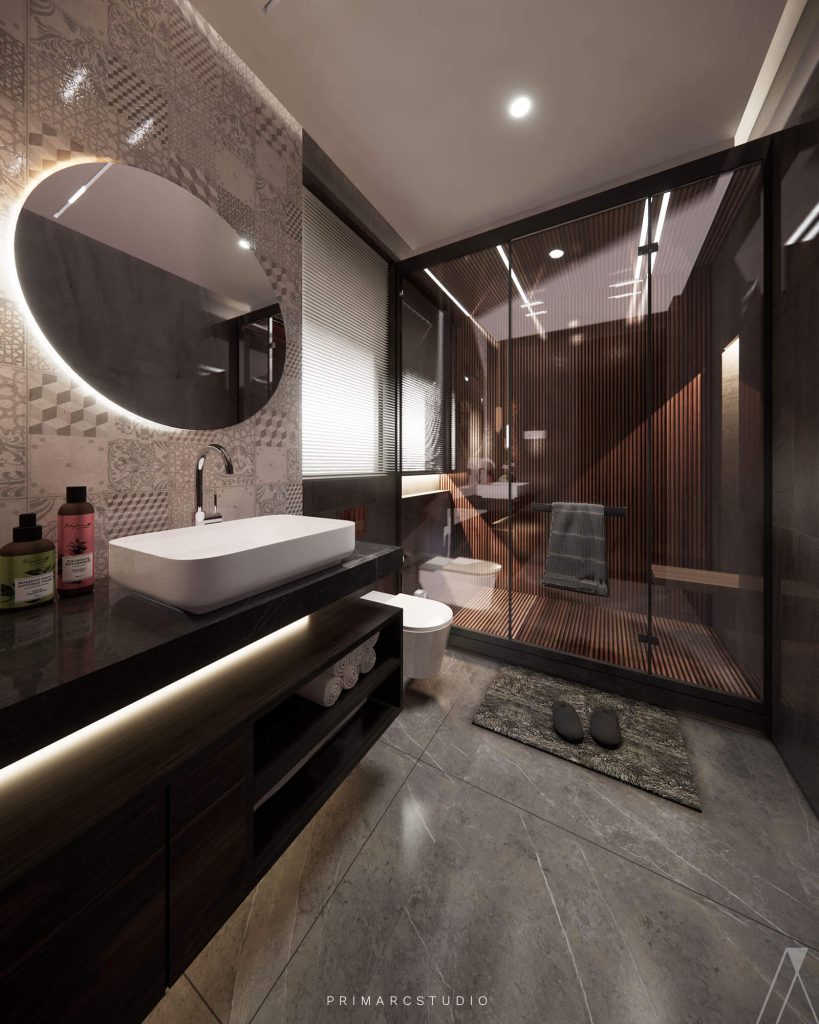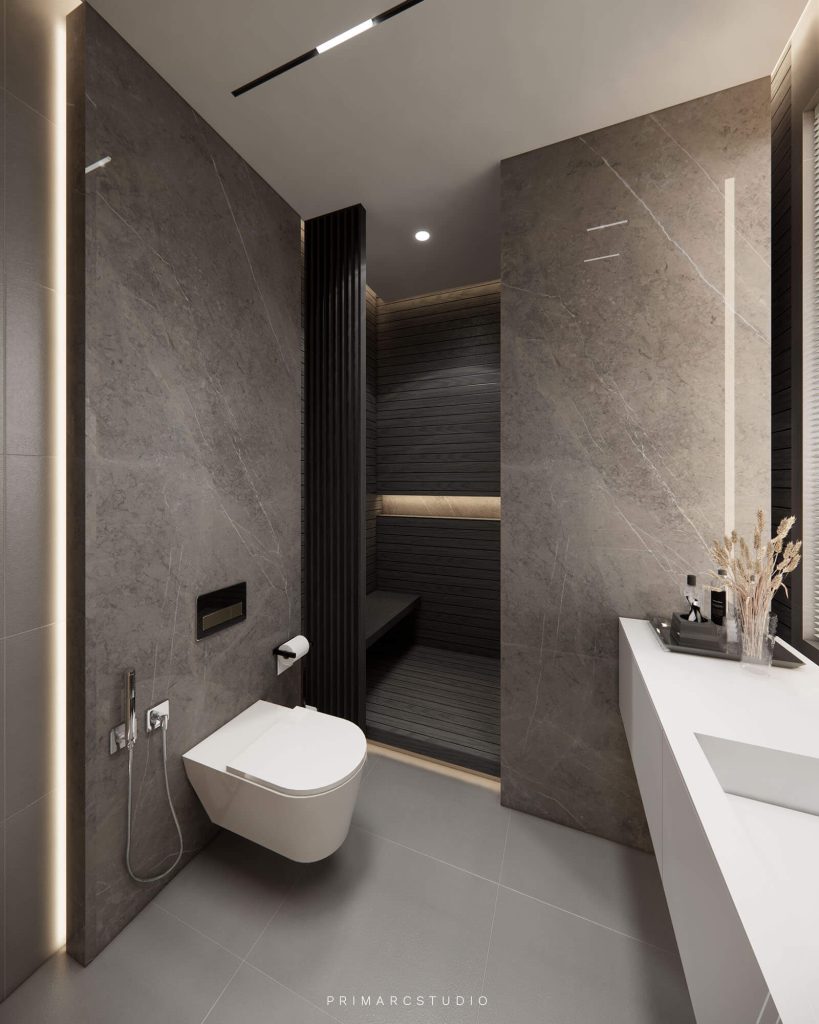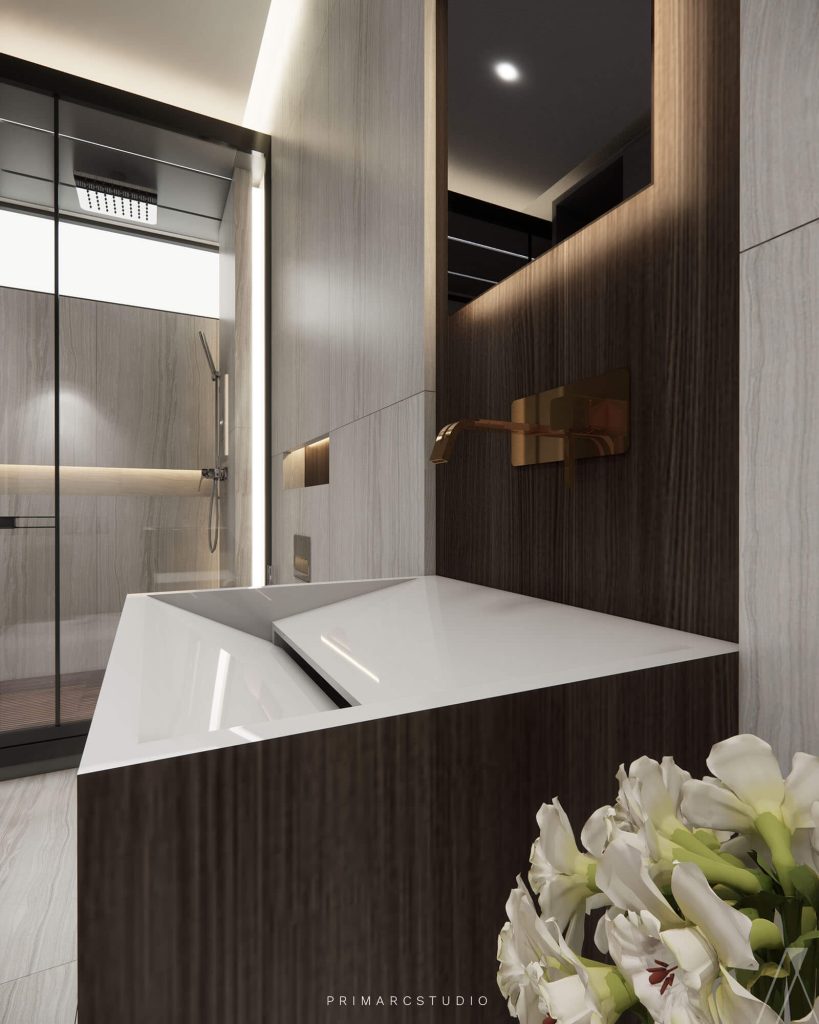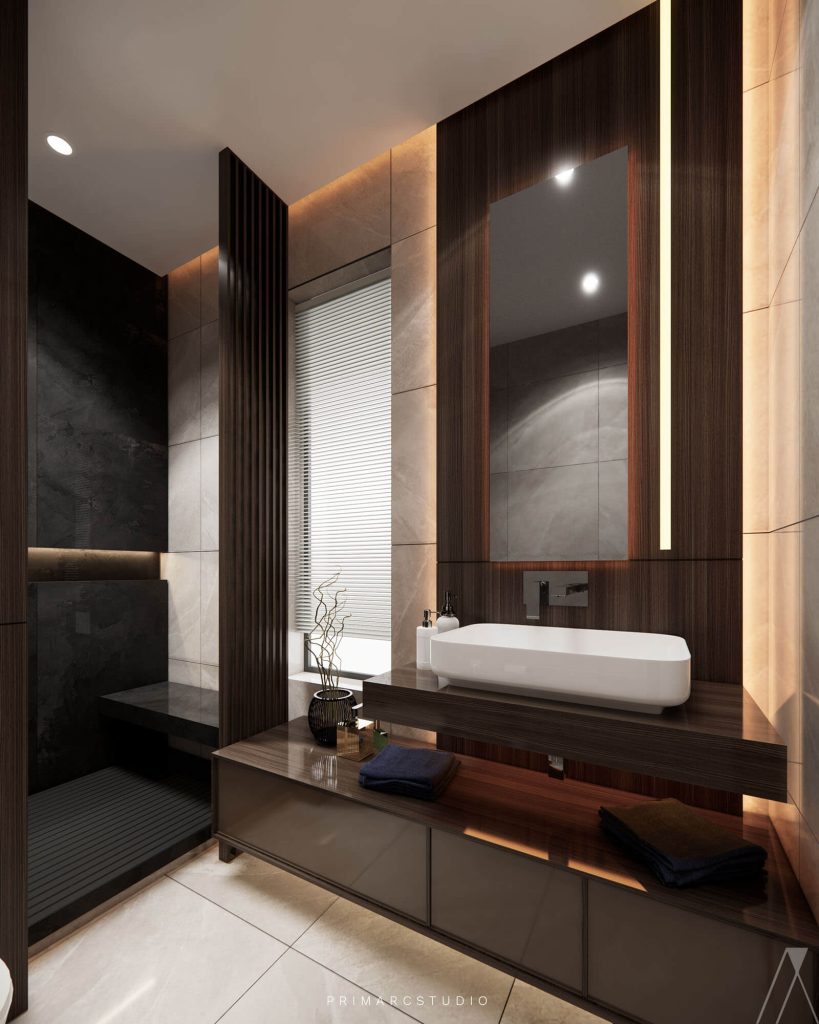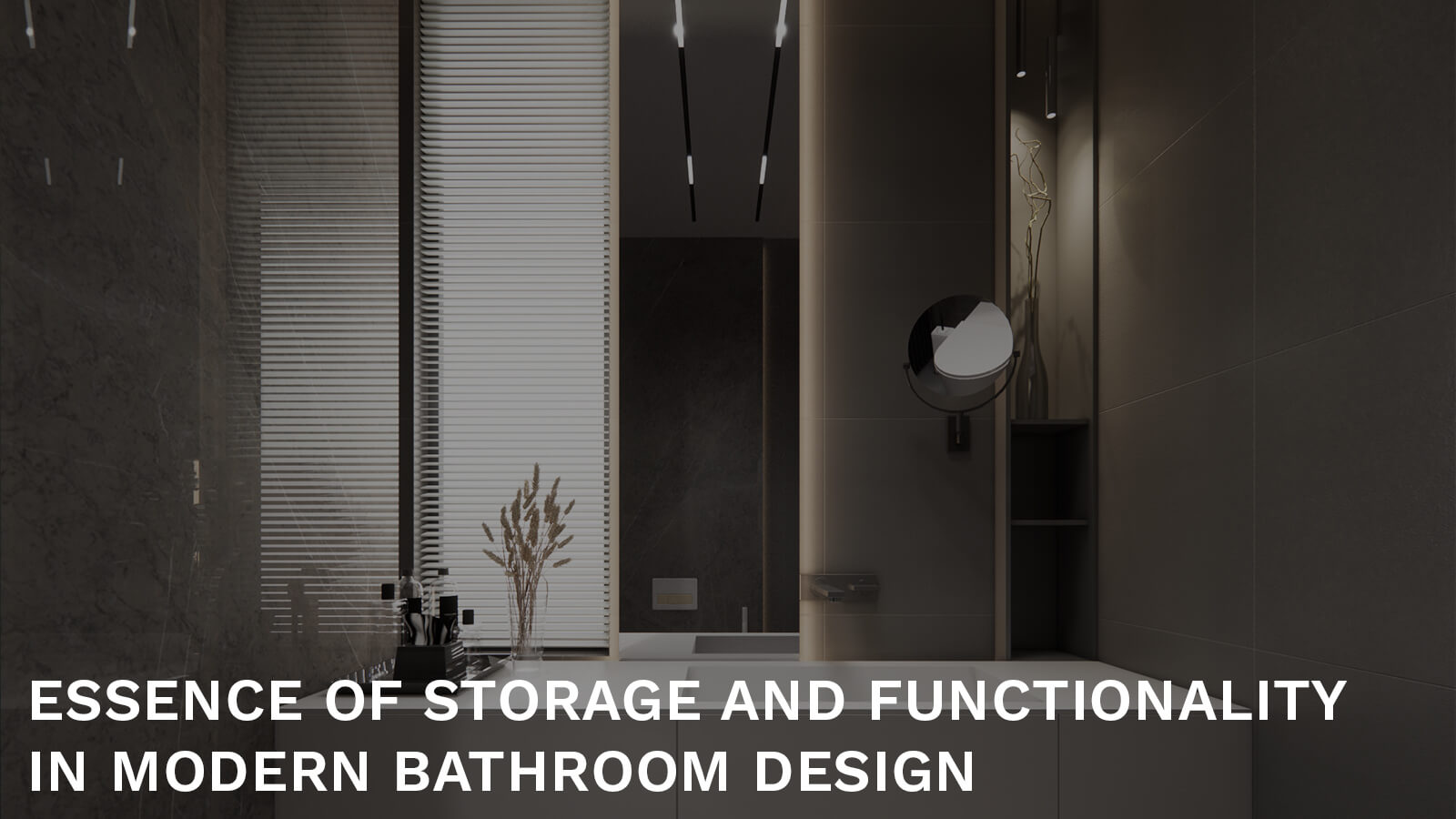
Essence of Storage and Functionality in Modern Bathroom Design
When it comes to modern residential design, we’ve seen clients particularly focus on personalized, luxury bathroom design – a sanctuary of serenity and functionality. This aesthetic evolution revolves around the artful integration of storage solutions, where every element is meticulously curated to optimize space utilization and enhance the user experience.
Let’s dive into the essential components of modern bathroom design that prioritize storage and functionality without compromising on style.
Efficient use of space
Gone are the days of cluttered countertops and overflowing cabinets. Modern bathroom design embraces the concept of efficient space utilization, exemplified by the open shelf storage unit beneath the sink. This ingenious addition houses neatly rolled towels, providing easy accessibility while maintaining a clutter-free environment. This storage solution contributes to the room’s organized and uncluttered feel by maximizing vertical space and minimizing visual obstructions.
In his book “The Bathroom,” Alexander Kira, an influential architect and author, emphasizes the importance of efficient space utilization in bathroom design. He notes that cluttered spaces detract from the visual appeal and hinder functionality and hygiene. Kira suggests incorporating open shelving and integrated storage solutions to maximize space and minimize clutter, a principle evident in modern bathroom designs.
Integrated lighting in bathroom
Integrated lighting plays a pivotal role in modern bathroom design, pursuing both practicality and ambiance. The under-mount lighting feature beneath the countertop casts a warm glow throughout the space. It accentuates the storage area, making locating items quickly and effortlessly easier. This strategic use of lighting enhances functionality and adds a touch of sophistication to the overall aesthetic.
Renowned architect and designer Le Corbusier famously stated, “Architecture is the masterly, correct, and magnificent play of masses brought together in light.” This sentiment underscores the significance of lighting in architectural design. In modern bathroom design, integrated lighting serves functional purposes. It enhances aesthetic appeal, creating a harmonious interplay of light and space.
Strategic placements
Every element in a well-designed bathroom serves a purpose, and strategic placement is key to achieving a harmonious balance between form and function. The round mirror above the sink serves a dual purpose—visually expanding the space. It reflects the intricate tile pattern, adding depth and interest to the room. Complemented by vertical lights on either side, this arrangement enhances visibility and creates a flattering ambiance for grooming tasks.
In his seminal work “A Pattern Language,” Architectural theorist, Christopher Alexander emphasizes the importance of strategic placement in architectural design. He argues that thoughtful placement of elements, such as mirrors and windows, can significantly impact the perception of space and functionality. By strategically positioning mirrors to reflect natural light and visually expand the room, designers can create a sense of openness and enhance the user experience.
Contemporary fixtures usage in the bathroom
In the realm of modern bathroom design, form follows function, and contemporary fixtures are chosen for their practicality and aesthetic appeal. From the sleek sink to the modern toilet design, every fixture is carefully selected to complement the overall theme while ensuring ease of maintenance and durability. This emphasis on functionality ensures that the bathroom remains practical for everyday use without compromising style or sophistication.
The renowned architect and designer, Frank Lloyd Wright, believed that “form follows function” and advocated for integrating modern technologies and materials into architectural design. Contemporary fixtures embody this principle in modern bathroom design by marrying sleek aesthetics with practical functionality. From minimalist sinks to high-efficiency toilets, these fixtures epitomize the marriage of form and function in contemporary living spaces.
Natural elements in washroom
Incorporating natural elements into the bathroom design adds a touch of warmth and tranquillity to the space. The vase with fresh flowers is a subtle yet impactful addition, infusing the room with life and vitality. Not only does this simple gesture brighten up the space, but it also creates a more inviting and comfortable atmosphere, transforming the bathroom into a haven of relaxation and rejuvenation.
Biophilic design principles, championed by architect Stephen Kellert, emphasize the innate human connection to nature and advocate for incorporating natural elements into built environments. In modern bathroom design, including natural materials such as wood accents and fresh flowers adds visual interest and promotes a sense of tranquillity and well-being, enhancing the overall user experience.
Privacy and light control
Balancing privacy and natural light is essential in modern bathroom design, where both factors contribute to the overall ambiance and functionality of the space. The strategically placed window with horizontal blinds offers the perfect solution, allowing ample natural light to filter in while giving users control over privacy. This thoughtful integration of architectural elements ensures that the bathroom remains a private retreat where users can unwind and recharge in peace.
Architectural guidelines, such as those outlined in the International Building Code (IBC), emphasize the importance of balancing natural light and privacy in interior spaces. Design strategies, such as strategically placing windows with adjustable blinds, allow occupants to control privacy while maximizing natural light intake. By adhering to these principles, designers can create bathrooms that offer both comfort and functionality for users.
In conclusion, the essence of storage and functionality in modern bathroom design lies in seamlessly integrating practical solutions with aesthetic sensibilities. From efficient space utilization to strategic lighting and carefully selecting fixtures, every element is thoughtfully curated to enhance usability and visual appeal. By prioritizing storage and functionality without compromising style, modern bathrooms become not just useful spaces, but havens of comfort and luxury where every detail is designed with the user in mind.
